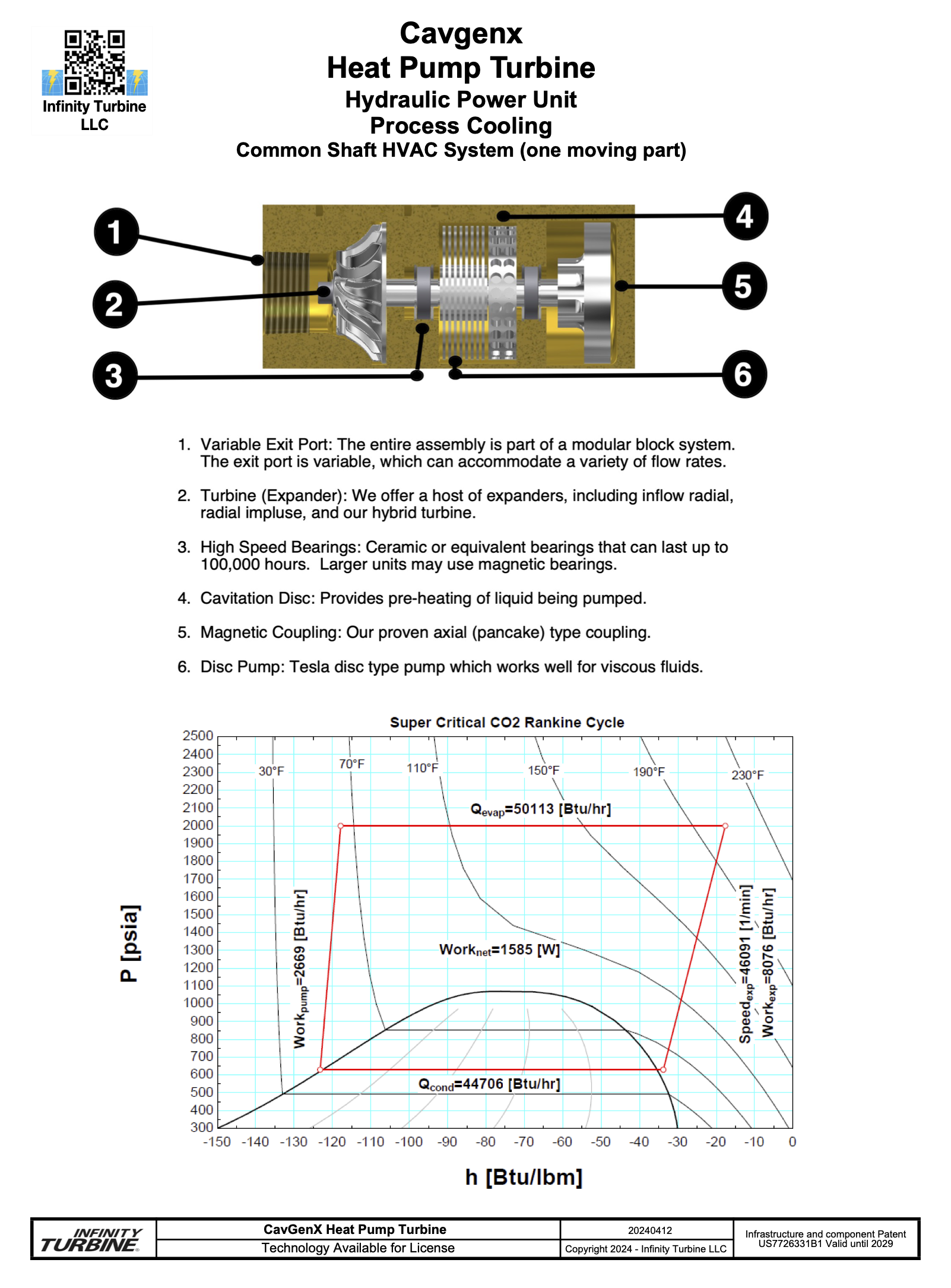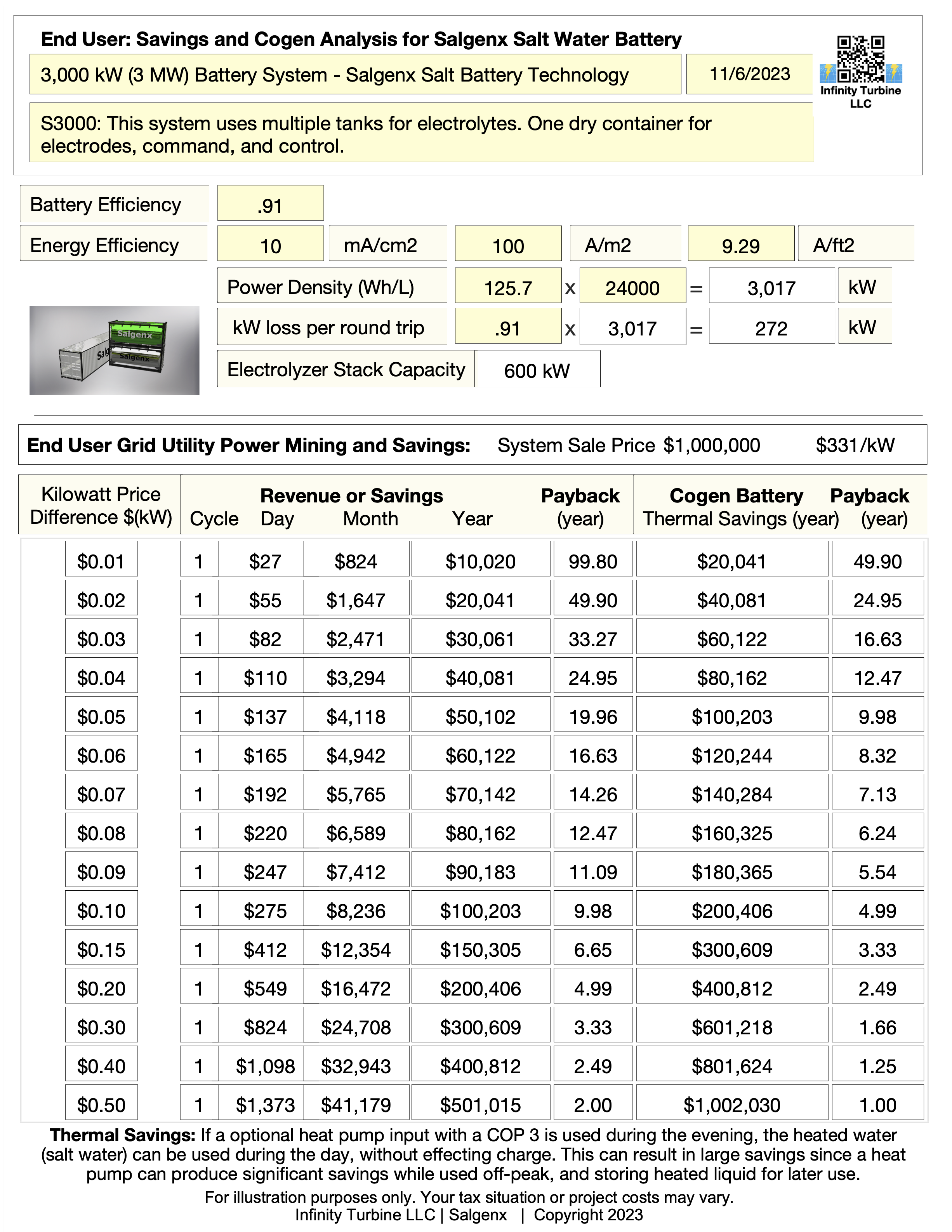
Sodium Flow Battery Cogeneration
Salgenx LLC • Sales • Licensing • Consulting TEL: 1-608-238-6001 Email: greg@salgenx.com
Zinc Based Electrodes for Chlorine Flow Battery Offer Higher Voltage and Better Energy Density Offering ultra-low cost build and up to 40,000 cycles at 93 percent efficiency... Zinc is available in rolls at Home Depot
Zinc-powered, saltwater-driven — the affordable flow battery redefining grid storage. Low-cost zinc electrodes meet limitless saltwater energy.
A breakthrough in sustainable storage — turbine battery system By directly coupling supercritical CO₂ turbine generators with zinc-based saltwater battery cells, electrical, thermal, and hydraulic energy streams can be unified into a single high-utilization system—scalable from low-grade data center waste heat to high-efficiency natural gas–fired combined cycles. More Info
No lithium, no fire risk, no compromise — just sustainable power. Turning saltwater into savings — one zinc electrode at a time.
The lithium alternative the world’s been waiting for. Zinc is the new gold in battery innovation.
$35 Tax Credit per kWh Until 2030 Reliable. Recyclable. Remarkably affordable. That’s zinc-based energy.
IT1000 Portable Power for Data Centers 1 MW Clean Power using Natural Gas, Solar Thermal, or Waste Heat
|
|
|

|
With a COP of 5, what are the energy savings of a heat pump when grid power is at $.15 per kwh ?
A heat pump with a coefficient of performance (COP) of 5 means that for every unit of electrical energy input, the heat pump can produce 5 units of heat energy. This means that a heat pump with a COP of 5 is five times more efficient at producing heat energy than an electric resistance heater, which has a COP of 1.To calculate the energy savings of a heat pump, you need to know the cost of the electricity and the amount of electricity used.If the cost of grid power is $0.15 per kWh and the heat pump is used to generate 1kWh of heat energy, the savings would be:1kWh x $0.15/kWh = $0.15 (cost of electricity to generate 1kWh of heat energy with an electric resistance heater)1kWh / 5 (COP) = 0.2kWh (amount of electricity used to generate 1kWh of heat energy with the heat pump)0.2kWh x $0.15/kWh = $0.03 (cost of electricity to generate 1kWh of heat energy with the heat pump)Therefore, the energy savings with a heat pump would be:$0.15 - $0.03 = $0.12It's worth noting that this is a simplified calculation and that the actual energy savings will depend on a number of factors, such as the specific heat pump, the temperature of the heat source, and the specific application. Additionally, the savings will depend on the price of electricity, which can vary depending on the location and the time of day.Overall, heat pumps are highly efficient devices that can provide significant energy savings, especially when the grid power is expensive.
|
|
|
|

With every 20 to 50 AI queries, approximately half a liter of fresh water is lost in the form of steam emissions
|
The Hidden Cost of AI: How Every Query Contributes to Water Scarcity
Note: The Cavgenx system is designed to be integrated into the Salgenx battery, which can be used as a heat sink for AI data center cooling and battery backup.In our digitally-driven world, artificial intelligence (AI) has become an integral part of our daily lives, from voice assistants and recommendation algorithms to chatbots and language models. We often use AI systems without realizing the environmental impact they may have. A recent study conducted by the University of California, Riverside, sheds light on a concerning aspect of AI technology: its hidden water footprint. Each time you run a ChatGPT artificial intelligence query, you unknowingly contribute to the depletion of our already overstressed freshwater resources.The Water Footprint of AIThe research from the University of California, Riverside, has revealed a startling fact: running AI queries that rely on cloud computations in data processing centers consumes significant amounts of freshwater resources. With every 20 to 50 queries, approximately half a liter (around 17 ounces) of fresh water is lost in the form of steam emissions. This might not seem like much on an individual basis, but the cumulative impact of billions of AI queries worldwide is a cause for concern...
AI programs consume large volumes of scarce water
UCR study finds that keeping servers powered and cool at cloud data processing centers has high water costs Making AI Less Thirsty: Uncovering and Addressing the Secret Water Footprint of AI Models PDF Download Study
|
|
|
|

|
Thermal Applications
Salgenx S3000 grid power mining and thermal savings chart.
|



